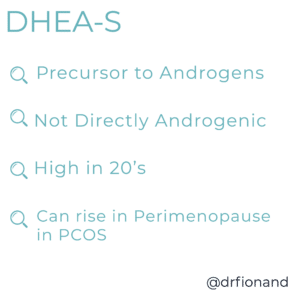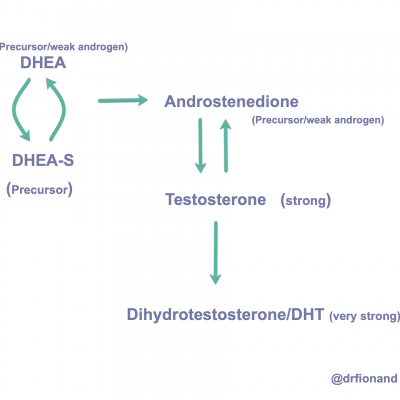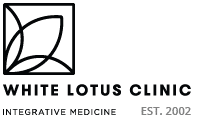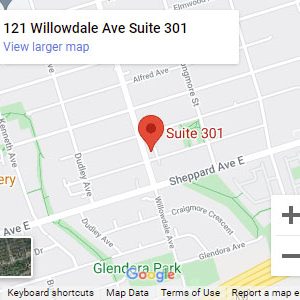Curious about DHEA-S or Adrenal Androgens in PCOS?
The first thing to know, is that DHEA-S is an Androgen Precursor, not the same as a direct androgen, like testosterone.
- DHEA-S *can* be converted into true androgens like testosterone
- DHEA-S doesn’t fit into the androgen receptor causing androgenic effects, whereas testosterone does
- DHEA-S is androgenic primarily when *converted* to direct androgens
Adrenal androgen excess is almost always associated with the ovary/brain cycle in PCOS. Meaning that the ovary utilizes this excess DHEA-S under the command of LH from the brain to create testosterone. From 20 years of experience in practice, it is a mistake to exclude the ovary and focus only on treating the adrenals in these patients. The entire cycle of PCOS must always be treated (see my post on the cycle of PCOS) to create a significant shift in the hormonal state.
Since DHEA-S levels peak naturally in the mid-20s, and decline with age, we commonly see increased levels in young patients (although commonly there is another rise in perimenopause, in PCOS).


Here’s the important part In some younger patients, after successfully treating PCOS, I often see levels of testosterone or androstenedione decline dramatically. Yet, DHEA-S levels don’t seem to drop to the same degree as the other androgens. That’s right, even when treating the adrenals and normalizing cortisol levels! And yet, these patients see major improvements in their cycles and androgenic symptoms!
This is because again, DHEA-S is a precursor and not a direct androgen. Even when a patient has adrenal androgen excess, it is critical to also focus on ovarian hormone production in order to bring the entire state to balance. Adrenal androgens are an important factor in PCOS but their role needs to be understood and treatment applied accordingly





